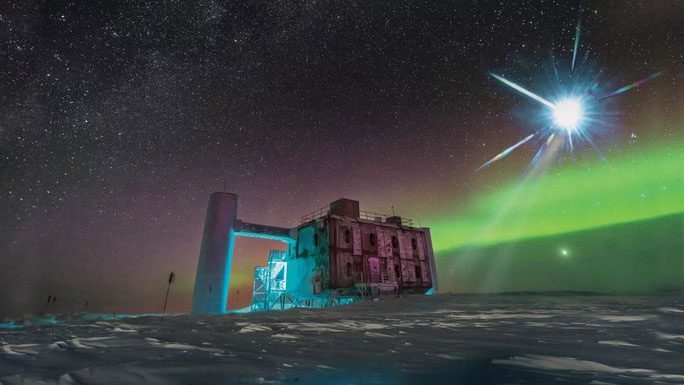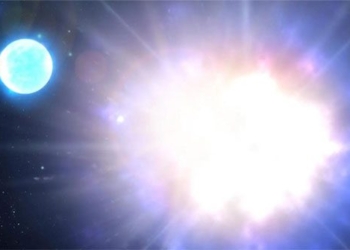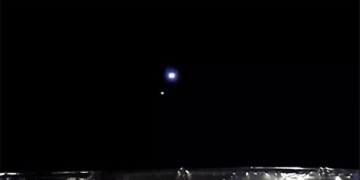By “capturing” and slowing down the elusive neutrino particles, scientists have made a significant breakthrough in understanding the hidden structures of the galaxy containing Earth.
According to Live Science, the recently released “neutrino map” on June 29 provides a first-ever glimpse into the Milky Way galaxy not through light.
This groundbreaking data was created by detecting neutrinos, also known as “ghost particles”, that passed through the IceCube Neutrino Observatory in Antarctica. In total, 60,000 particles were “captured” and slowed down by scientists, revealing their origins.

IceCube Observatory at the Amundsen-Scott South Pole Station – (Photo: NSF).
Neutrinos are referred to as ghost particles because they almost defy every law of matter. They have no electric charge, a mass close to zero, and do not interact with other forms of matter.
They are abundant all around us, continuously passing through us, even traveling through the Earth like a ghost, at speeds nearly the speed of light.
The origin of these ghost particles has been a question that scientists have pursued since IceCube detected their existence.
According to a publication in the journal Nature, scientists have finally been able to directly link them to ancient catastrophic star explosions and terrifying cosmic collisions.
This also helps to reveal an ancient, wild part of the Milky Way.
“The capabilities provided by the IceCube detector with its high sensitivity, along with new data analysis tools, have given us an entirely new perspective on our galaxy, a view that was previously only hinted at,” said Denise Caldwell, Director of the Physics Division at the U.S. National Science Foundation and a member of the research team.
The research team continues to refine their work and believes it will provide humanity with increasingly high-resolution images of the hidden features of the Milky Way, which we often see in the night sky.
It is estimated that about 100 billion ghost particles pass through each square centimeter of our bodies every second. However, due to their invisibility and ability to penetrate everything like a ghost, “capturing” them requires the immense machinery of IceCube.
One of IceCube’s “tentacles” reaching deep into the Antarctic ice – (Photo: NSF).
The IceCube Observatory is a massive detector located at the Amundsen-Scott South Pole Station, with nearly 5,000 optical sensors arranged into strings that hang down into deep boreholes reaching up to 2.5 kilometers into the permanent ice of Antarctica.





















































